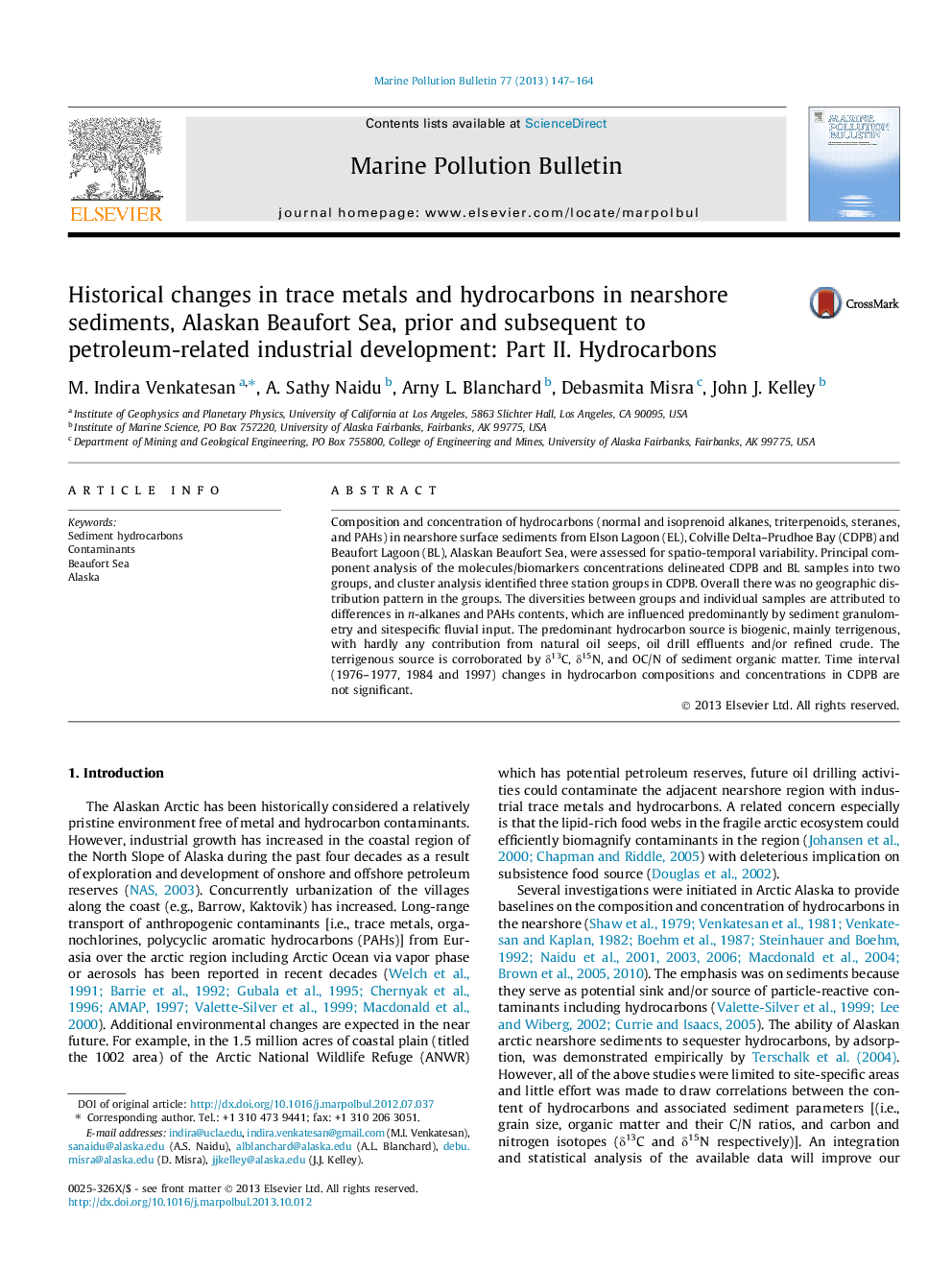| Article ID | Journal | Published Year | Pages | File Type |
|---|---|---|---|---|
| 6359287 | Marine Pollution Bulletin | 2013 | 18 Pages |
Abstract
Composition and concentration of hydrocarbons (normal and isoprenoid alkanes, triterpenoids, steranes, and PAHs) in nearshore surface sediments from Elson Lagoon (EL), Colville Delta-Prudhoe Bay (CDPB) and Beaufort Lagoon (BL), Alaskan Beaufort Sea, were assessed for spatio-temporal variability. Principal component analysis of the molecules/biomarkers concentrations delineated CDPB and BL samples into two groups, and cluster analysis identified three station groups in CDPB. Overall there was no geographic distribution pattern in the groups. The diversities between groups and individual samples are attributed to differences in n-alkanes and PAHs contents, which are influenced predominantly by sediment granulometry and sitespecific fluvial input. The predominant hydrocarbon source is biogenic, mainly terrigenous, with hardly any contribution from natural oil seeps, oil drill effluents and/or refined crude. The terrigenous source is corroborated by δ13C, δ15N, and OC/N of sediment organic matter. Time interval (1976-1977, 1984 and 1997) changes in hydrocarbon compositions and concentrations in CDPB are not significant.
Keywords
Related Topics
Physical Sciences and Engineering
Earth and Planetary Sciences
Oceanography
Authors
M. Indira Venkatesan, A. Sathy Naidu, Arny L. Blanchard, Debasmita Misra, John J. Kelley,
